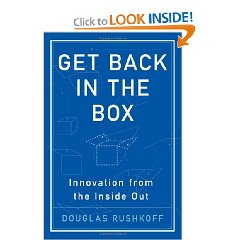This book should be read together with Cornel West's
Democracy Matters: Winning the Fight Against Imperialism Peter Peterson's
Running on Empty: How the Democratic and Republican Parties Are Bankrupting Our Future and What Americans Can Do About It Jim Wallis,
God's Politics: Why the Right Gets It Wrong and the Left Doesn't Get It (Plus) [slams both Right and Left–the Right for claiming that Jesus is pro-war, pro-rich, and a selective moralist; the Left for not embracing faith and God as part of the politics of America]; and David Callahan,
The Cheating Culture: Why More Americans Are Doing Wrong to Get Ahead There are many, many other books that support President Carter's wisdom, and my point in mentioning just a few of them early in this review is to stress that we are indeed in a national crisis, and this one book by President Carter provides us with a pensive pause from which we might then begin to take action.
The introduction is nothing less than an implicit (NOT explicit) manifesto for the impeachment of the current Administration and its political neo-conservatives and their extremist fundamentalist right-wing Christian religious zealots (who, coincidentally, are aligned in the Middle East with extremist Jews and completely corrupt energy and construction companies that profit from war).
EDIT of 11 Dec 07: Also in support of President Carter, these books just out:
American Fascists: The Christian Right and the War On America
American Theocracy: The Peril and Politics of Radical Religion, Oil and Borrowed Money in the 21st Century
Consider this one sentence from the introduction: “Most of our political leaders have extolled state and local autonomy, attempted to control deficit spending, avoided foreign adventurism, minimized long-term peacekeeping commitments, preserved the separation of church and state, and protected civil liberties and personal privacy.” The only thing President Carter does not include here that I would is “and respected the separation of powers and particularly the Congressional prerogatives of declaring war and controlling the public purse.”
This book is nothing less than a national-level sermon on what is wrong and where we need to go. I have often thought over the years that President Carter was too far ahead of his time. He paid heavily for being honest about the need to deal with future growth issues and national malaise in the 1970's. I am struck, not only by how right he was, but by how he may be just what we need now, returning him to the Presidency in 2008, especially if he asks John McCain to be his Vice President and commits to both a coalition cabinet announced in advance, and a platform with just three planks: restore the integrity of the individual vote (by ending gerrymandering, campaign contributions, and lobbyists; reinstate the League of Women Voters as the debate managers, open to all parties; move voting to week-ends to accommodate the working poor); restore morality in both governance (end our support of 44 dictators) and business (end subsidies, tax breaks, and predatory capitalism); and balance the budget (end both debt and trade deficits, in part by localizing energy, transportation, agriculture, and production).
President Carter nails it when he states in his conclusion that the greatest challenge we face is the growing chasm between the rich and the poor on earth. He is at one with C. K. Prahalad (The Fortune at the Bottom of the Pyramid: Eradicating Poverty Through Profits (Wharton School Publishing Paperbacks) )when he observes that “extremely poor people demonstrate remarkable intelligence, innovation, and effectiveness.” I had no idea of the extraordinary results the Carter Center has been achieving around the world–unlike other Presidential Centers that focus on glorifying their subject, the Carter Center has been focused, in relative anonymity, on actually saving the world.
He concludes that what defines a great Nation is not its economy or its military, but its “demonstrable commitment to truth, justice, peace, freedom, humility, human rights, generosity, and the upholding of moral values.” Implicit throughout the book is also the need to return to a separation of church and state, and our traditional respect for providing our citizens with accurate information, welcoming dissenting voices, and accommodating free and open debate on controversial issues.
Edit of 11 Dec 07: See also:
Society's Breakthrough!: Releasing Essential Wisdom and Virtue in All the People
All Rise: Somebodies, Nobodies, and the Politics of Dignity (BK Currents)
Escaping the Matrix: How We the People can change the world
The Tao of Democracy: Using Co-Intelligence to Create a World That Works for All
President Carter does not, in any way, shape, or form, call for the impeachment of this current Administration, nor does he comment on the Democratic Party as an alternative. My own view is that the Democratic Party cannot be trusted as an alternative–they are as corrupt as the Republicans (I am a moderate Republican dismayed by the current “coup d'etat” engineered by the neo-conservatives). My own view is that President Carter's vision for the future of American will not happen unless we first do two things:
1) Insist that anyone who wishes to be elected or re-elected in 2008 to Congress campaign as an Independent, and strive for a coalition Congress led by Independents with Democratic and Republican incumbents not up for re-election as minorities; and
2) Devise a coalition Executive team, ideally led by President Carter, to win in 2008 with the sole and explicit objective of restoring the integrity of the individual vote so that the common sense of the people might hold sway over all the other decisions that face us.
I am mighty impressed by this book and the wisdom in this book. Other candidates for President pale in comparison to this author. It would be a mighty fine sign of divine providence if we were to have a chance to bring Jimmy Carter back as president, but not as a Democrat–as an Independent American.
EDIT of 11 Dec 07: Lou Dobbs on CNN is calling for all Americans to consider re-registering as Independents, and Jim Turner, Naderite #1, led Naderites for Gore 2000, is seeing signs of 100 million who have opted out on partisan politics, coming back for the big one.









